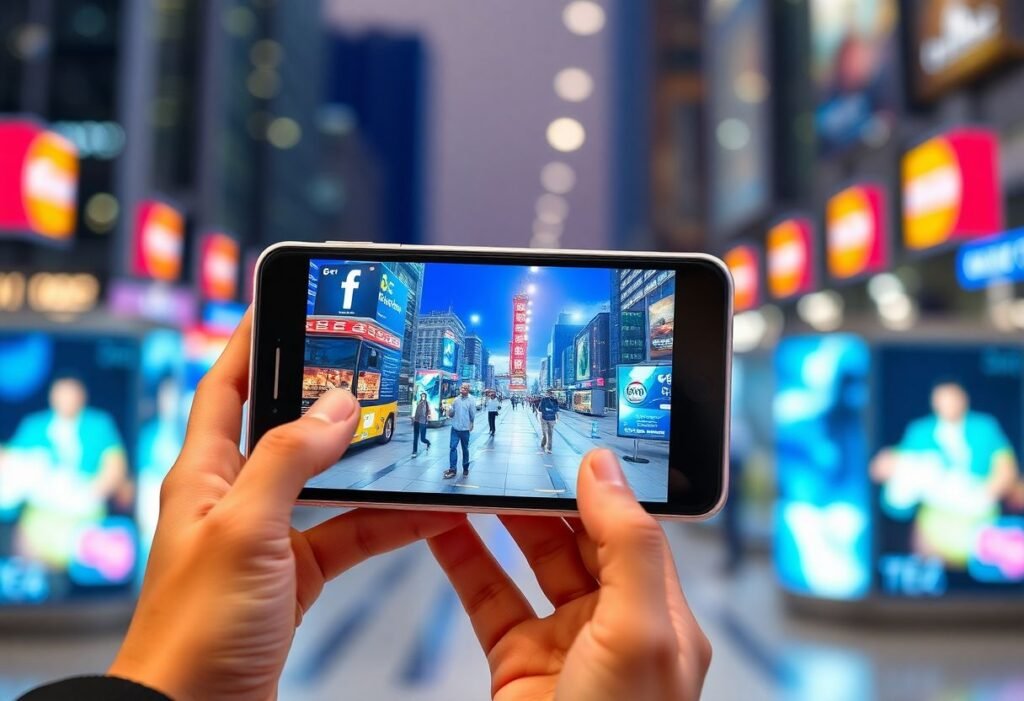Augmented Reality (AR) is reshaping the landscape of modern advertising by bringing innovation to life, providing immersive experiences that engage consumers in ways traditional advertising cannot. This technology not only enhances visual aesthetics but also transforms how brands interact with their target audience, fostering deeper connections and driving conversion rates.
Transformative Impact of Augmented Reality on Advertising
As businesses strive to remain competitive, the integration of Augmented Reality into advertising strategies is proving to be revolutionary. By overlaying digital content onto the physical world, AR allows brands to create unique experiences that captivate consumers. This innovative approach can boost brand visibility and capture potential customers’ attention, leading to increased engagement. Companies like IKEA have adopted AR technology, allowing customers to visualize furniture in their homes before making a purchase. This not only enriches the shopping experience but also significantly reduces product returns.
The Enhancement of Customer Experience Through AR
In a world where consumer expectations are continuously rising, enhancing the customer experience is paramount. AR enables brands to offer interactive experiences that allow customers to engage with products beyond conventional methods. For example, beauty brands like Sephora utilize AR to let customers try on makeup virtually. By facilitating a personalized shopping experience, companies can significantly influence purchasing decisions, fostering customer loyalty and increasing sales.
Innovative Marketing Campaigns Utilizing Augmented Reality
Successful advertising campaigns increasingly leverage the power of AR to create memorable and engaging content. These innovative marketing campaigns not only attract attention but also evoke emotional responses. For instance, the Pokémon GO phenomenon led brands to explore location-based AR marketing, encouraging consumers to interact with their favorite characters and products in real-world environments. Such campaigns exemplify how AR can foster a unique blend of offline and online engagement, amplifying brand awareness.
Augmented Reality and Brand Storytelling
Brand storytelling is essential for building a meaningful connection with consumers. AR can elevate this narrative by providing immersive experiences that allow users to engage with a brand’s story in a tangible way. By using AR to bring their storytelling efforts to life, brands can create deeper emotional connections with their audience, making their narratives more engaging and memorable. This approach is effective in differentiating a brand in the crowded marketplace, providing a unique context for consumers to relate to.
The Future of Advertising with Augmented Reality
The future of advertising is undeniably entwined with advancements in AR technology. As brands continue to explore its potential, emerging trends such as personalized AR advertisements and gamified marketing are shaping the advertising landscape. Enhanced capabilities, like improved spatial recognition and more comprehensive data analytics, are set to pave the way for more targeted and efficient marketing strategies. As consumers increasingly seek immersive experiences, AR will play a pivotal role in determining how brands communicate with their audience.
Challenges and Considerations in AR Advertising
Despite its advantages, implementing AR in advertising is not without challenges. Brands must consider technical limitations, user acceptance, and costs associated with developing AR content. Ensuring a seamless user experience is crucial; any technical glitches can lead to consumer frustration and damage brand reputation. Additionally, as AR rapidly evolves, keeping pace with technological advancements is essential for successful advertising strategies. Brands must invest in continuous learning and adaptation to stay relevant in this innovative space.
Disclaimer: This article aims to provide helpful insights into the role of Augmented Reality in advertising innovation. It is not intended as professional marketing advice.





















